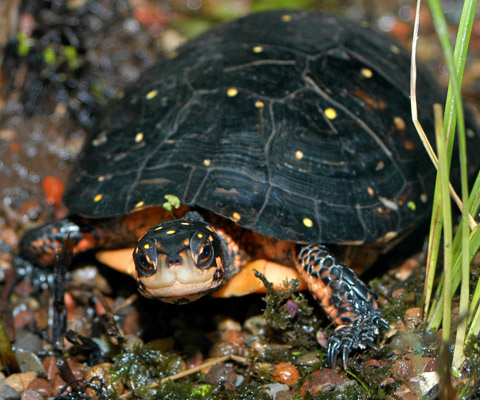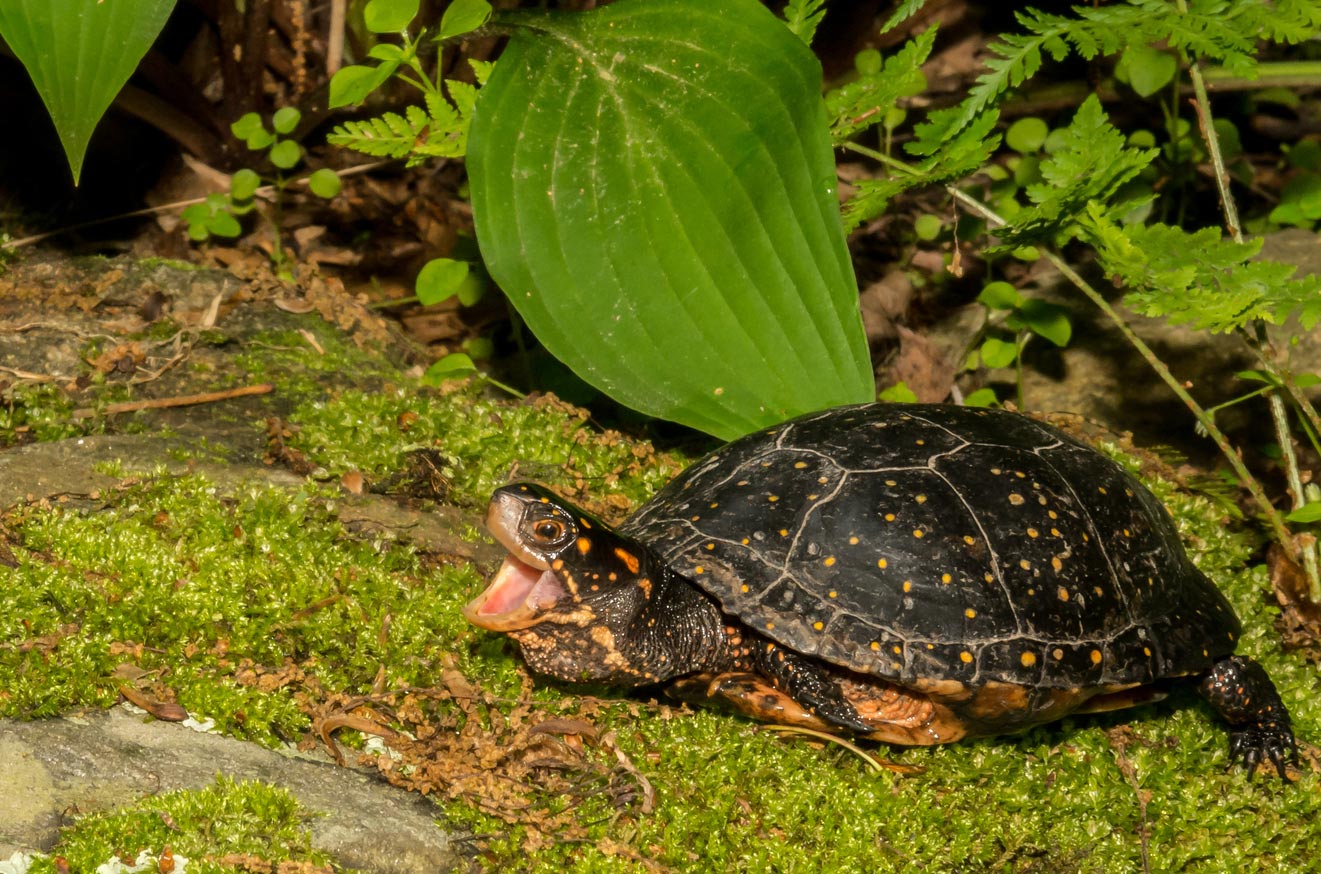
SCIENTIFIC NAME
Clemmys guttata
DESCRIPTION
The Spotted Turtle’s upper shell is covered with small yellow or orange spots. Its limbs and tail are black with varying amounts of yellow or orange.
RANGE
Southern Ontario
HABITAT
Spotted Turtles live in shallow waterbodies such a bogs, fens or swamps. They can make use of multiple small wetlands, or remain within one larger wetland. Females usually nest close to water in open areas in sand, soil or moss. In winter, Spotted Turtles hibernate under water on the bottom of these wetlands.
DIET
BEHAVIOUR
undefinedPRIMARY ECOSYSTEM ROLES
- 0







